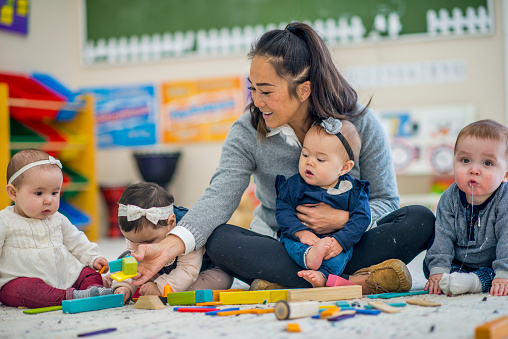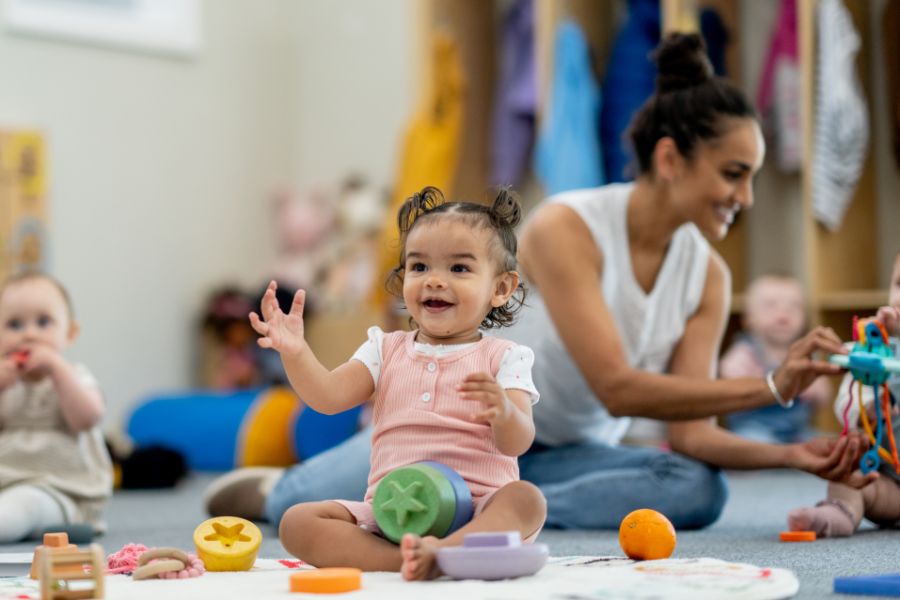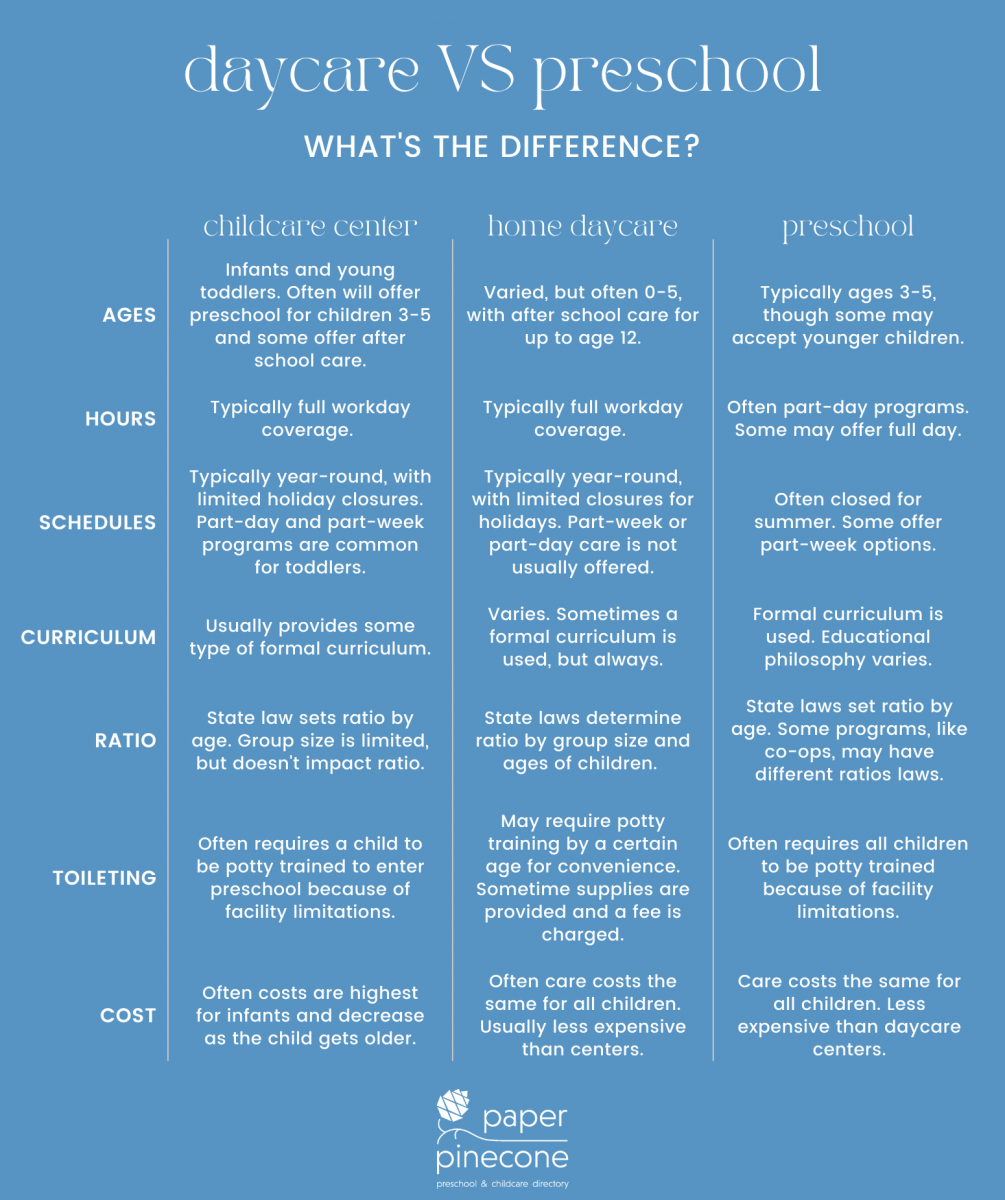What is the Difference Between Daycare and Preschool?

Published Date: 01/05/24
Jump to:
Child care center, home daycare, preschool: which is right for your family?
Goal of preschool versus the goal of daycare
What are the similiarities between daycare and preschool?
What are the differences between daycare and preschool?
What do children learn in daycare and preschool?
Is pre-k different from preschool?
Childcare costs: daycare versus preschool
Comparison table of childcare centers, in-home daycares, and private preschool
What should you look for in a childcare provider?
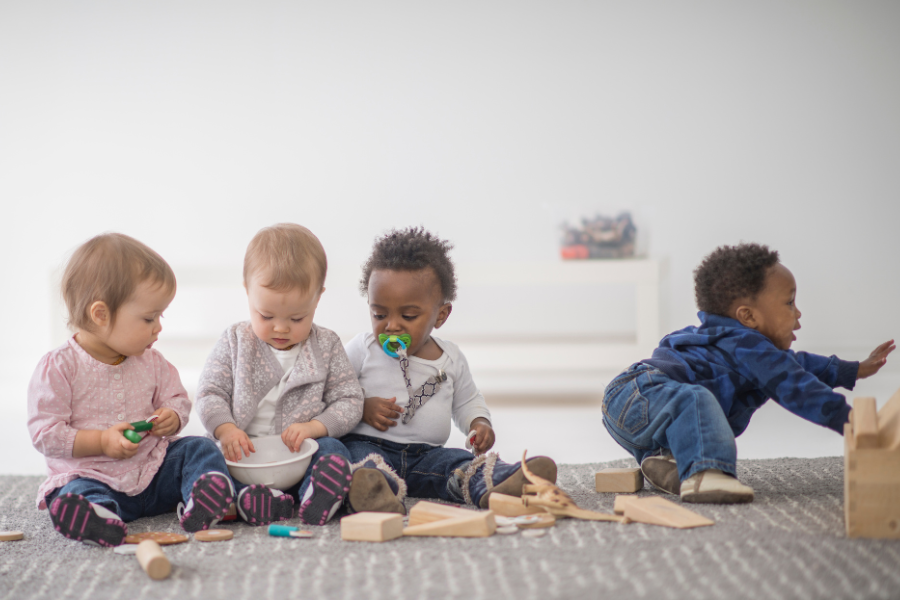
Child care center, home daycare, preschool: which is right for your family?
Many people use daycare and preschool interchangeably but the offerings and benefits of daycare and preschool are not the same. It's important to understand the differences so you can choose the right child care for your family.
The ages served, program offerings, hours, and costs will all be deciding factors in choosing between daycare and preschool for your child.
Regardless of the type of childcare you choose, it should be play-based with a strong emphasis on social emotional skills.
"Monkeys play. Dogs play. Rats play. Even octopuses play. And without any instruction, children of all races and genders, in all cultures of the world, invent and reinvent play in every generation. Something this ubiquitous must provide evolutionary advantages to both animals and humans. Decades of research suggest just that."
-Excerpt from "The Case of Brain Science and Guided Play: A Developing Story" by Brenna Hassinger-Das, Kathy Hirsh-Pasek, and Roberta Michnick Golinkoff
The goal of preschool versus the goal of daycare
Both daycare and preschool should provide a safe and secure place for children to connect with engaging care givers when they are away from their parents, but the biggest difference is the purpose between the two. Let's look at the main goal of each type of child care.
What does preschool offer?
- Ensures young children between ages two and five have a safe and engaging environment
- Prepares children to enter kindergarten with an emphasis on early childhood education, both academic and social emotional skills
- May offer different methodologies which can help parents tie the way their child learns in to their parenting style (such with as Montessori parenting)
- Might separate children by age group or have mixed-age groups of children ages 3-5 in the same class
- May follow a school year schedule with time off for summer and long holiday breaks
- Often offers half-day programs or attendance just a few days per week
What does daycare offer?
- Provides safe child care for young children, and many go from infancy through school-age
- Generally offer more free play than preschool, with a focus on social interaction
- Often offers a wider age range than preschool, especially in home daycare
- Frequently offers long hours and a full-time schedule
- Is designed to provide care while parents are at work
- Typically offers a year-round schedule
What are the similiarities between daycare and preschool?
Both preschools and daycares aim to provide children with a safe place for whole-child growth, including social emotional development, playful learning, physical activity, and growing their communication skills. Children's brains are developing rapidly during their early years and nurturing connections between a child and their caregiver plays a big role in healthy brain development.
Studies have shown that the most important thing to look for in child care is high quality interactions between children and providers. Children may spend many hours a week with their care givers and it's important that they feel safe and secure in their teachers care.
Both types of care should allow children to have free and structured play, hands on learning through sensory play, and plenty of outdoor time. Music, reading, and art are also usually part of well balanced child care.
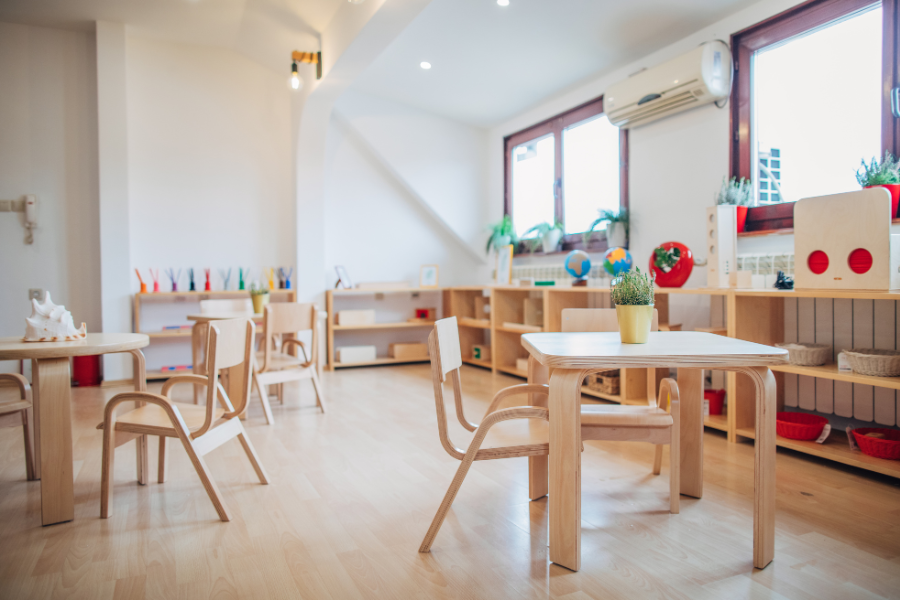
What are the differences between daycare and preschool?
Ages served
In general, daycare is for infants and younger kids, though some may offer after school care for an older age group. Center-based daycare often offers more class options compared to in-home child care care with young children being divided into infant and toddler classes. Younger and older toddlers can be further grouped separately due to the fact that they have very different physical and communication abilities.
Most preschools accept children three to five, though some accept younger children. They often places a stronger emphasis on education, especially academics as they hope to prepare kids for kindergarten.
In-home daycare will sometime offer a preschool curriculum for children ages 3-5. However, since you'll find infants through school age in the same "class," there are often fewer typical preschool activities.
Child care hours and schedule
Whether you are considering in home or center based child care, the schedule offerings are one of the major deciding factors. Some child care facilities may only offer half day options or two to four day child care.
A big difference to note is that most preschools operate on a traditional school schedule with days off for educators, holiday closures, winter and summer breaks, and other no school days. This can greatly affect working parents who rely on child care year round.
Working parents (unless they are a teacher themselves) almost always need year round care. Some elementary schools have child care facilities that offer child care before and after school hours.
Caregiver to child ratio
The child to teacher ratio is an important factor to consider and varies across the nation. Many parents want their child to have one-on-one care and and the lower the child to teacher ratio, the more individualized care each child can receive.
By law, ratios are based on a child's age. For infants in a daycare center, child care ratios range from 1:3 to 1:5, depending on the state.
As your child gets older, the ratio will change, and state laws generally permit a 1:12 child care ratio for ages 3-5, though some child care centers will operate with a lower ratio to provide children more personalized attention.
For family or in-home child care, children are in a mixed-age environment and therefore the ratio is different. You might have one adult caring for up to ten children, with a limit of two to three infants at a time.
Potty training requirements
You might find that in both child care centers and in-home programs, potty training is required once a child is preschool-age. This is generally between 2.5-3.
Having your child potty trained by a specific date is not developmentally appropriate if your child is not ready. However, because of child care regulations, facilities are not always equipped with changing areas, especially in preschool classrooms. And with the higher ratio, preschool staff can't change diapers and effectively manage a dozen young children. Since daycare typically serves children ages 0-3, daycare staff are expected to change diapers.
It's unfortunate, but often preschools simply can't have a child in diapers. If your child is hesitant to potty train, this is definitely something to consider when looking at child care options.
RELATED ARTICLE: POTTY TRAINING TIPS & TRICKS
What do children learn in daycare and preschool?
Children typically enter kindergarten at age five, depending on their birthday, and kids younger that that can get a jump start with preschool. You'll find pre-kindergarten offered at most preschools as well as at the local public school in many areas as well.
When considering childcare options, it's important to understand that the primary focus of early childhood education is, or at least should be, social emotional development. Children must begin to develop life skills, like empathy and be set on the path to responsible decision making (a skill that cannot be fully realized until the prefrontal cortex is fully developed around age 25!).
Any child care program should take a play-based approach to learning.
High quality preschool has lifelong benefits
Social emotional skills
Social emotional learning is a crucial part of early childhood development, and a lifelong journey. In preschool children should begin to learn social norms, how to follow directions, negotiation skills as they decide who gets the next turn or who gets to play with what toy, social awareness, empathy, decision making skills, self-awareness of their own emotions, emotional regulation, conflict resolution, and respect for others. It's important to remember that no child will master these skills in preschool, but instead the groundwork should be laid for them to build on throughout their lives.
Motor skills
Early childhood is a time when fine and gross motor skills rapidly grow. Preschool and daycare settings will give them opportunities to develop gross motor skills through climbing and other forms of vigorous physical play. Fine motor skills will be developed through coloring, writing, learning to use scissors, using utensils sorting activities, turning pages in a book, and other activities.
Academics
You'll find a wide range of academics across preschools and daycares and it's important to remember that children develop at very different rates. Some children are ready for academics in early childhood and other aren't.
Most daycare and preschool programs will introduce pre-literacy skills, like learning the alphabet, colors, shapes, numbers, and pre-math skills through sorting, sequencing, and matching.
“We need to get beyond this notion that young children are either playing or learning, because the truth is that they learn best through the process of playing.”
- Suzanne Bouffard, Developmental Psychologist, Author of "The Most Important Year: Pre-Kindergarten and the Future of Our Children”
RELATED: WHAT IS PLAY-BASED LEARNING AND DOES IT PREPARE YOUR CHILD FOR KINDERGARTEN?
Is pre-k different from preschool?
Yes and no. Pre-k describes the final year of preschool before entering kindergarten. Some preschools specifically title a classroom of 4- and 5-year-olds pre-kindergarten and others don't.
Within a preschool, there is often more emphasis placed on academics in a pre-kindergarten class than in younger classrooms and you might find pre-k offered at your local public school. However, it is essential that all academics should be taught through play-based methods and that social emotional skills are the focus, as they are the most important skills children need for kindergarten and for life!
Childcare costs: daycare versus preschool
Child care costs vary greatly state to state, and your costs will vary depending on factors such as what type of childcare you choose, in home or center based, the age of your child, how many children you have, and how many hours and days a week you need care.
How much does preschool cost?
The cost of preschool varies tremendously. At the federal level, Head Start offers free preschool to children in low income families across the country. Many states offer universal pre-k and some offer preschool to children ages 3 and up. Most public programs are free, but priority enrollment is often offered to low income families. Those that do charge may be on a sliding scale based on income, or offer a flat fee that's typically lower than private programs.
With private preschool, you'll find a wide range depending on where you live and they type of program offered. In NYC you'll find the most prestigious preschools charging between $40,000-$55,000 annually. Rest assured, though. The average cost ranges from about $6,000 per year in some rural areas to about $21,000 per year in affluent cities.
Of course, the cost of a part-time program that runs during the school year will be substantially different from a full-time program that runs year-round.
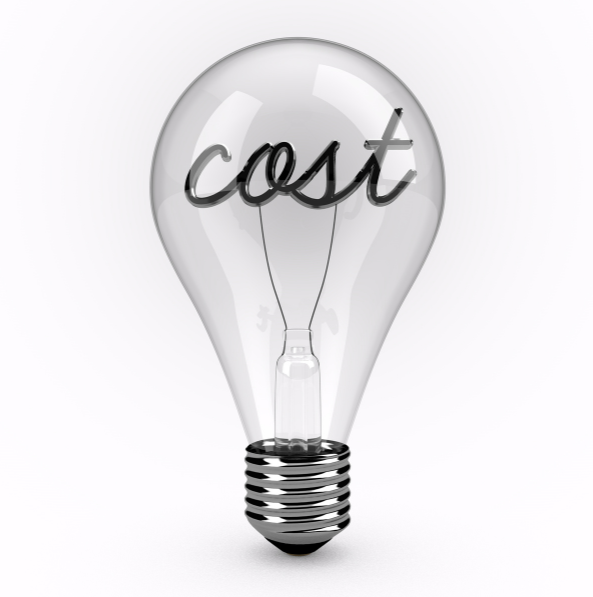
How much does daycare cost?
Like preschool, daycare costs range greatly based on location and other facts. In most childcare centers, daycare for younger children, especially infants, is significantly higher than preschool. While every state sets it's own laws regarding ratio of caregivers to children, all require more adults per infant than they do preschool-age child. The additional costs for infant care go directly towards the higher staffing costs.
In addition, childcare is one of the most heavily regulated industries in the country, which also adds to operating expenses.
The average American family can expect to pay about $250 per week for home-based daycare and $300 per week for a childcare center. That translates to $13,000 - $15,600 annually. As with anything, in more affluent areas costs will be higher and in lower income areas costs will be lower.
Is in-home daycare less expensive than a childcare center?
Very often in-home daycares are less expensive than local childcare centers. This is because in-home daycares have less overhead and can therefore charge less.
Every state has its own regulations regarding the licensing and oversight of in-home daycare, with some states requiring all daycares to be licensed and others allowing daycare to operate without a license. You should check the regulations of your state before searching for a daycare to ensure they're operating legally.
RELATED: CHILD CARE CENTERS VS HOME DAYCARE - WHICH IS BETTER?
Child care payment assistance
While there are no federal childcare subsidy programs as of this writing, the federal government provides funds to each state to support their childcare assistance programs. These may be called vouchers, subsidies, fee assistance, or something else.
Other child care assistance programs are available to military families and Indigenous Americans, come from employers, or are available through tax credits.
Lastly, if you have more than one child needing care you can look for programs that offer sibling discounts.
"With child care costs set to rise substantially with government funding disappearing, a lot of people are having to look and say 'Can we afford this higher cost of child care?' And other child care centers are wondering if they can get in enough revenue to keep their doors open when they're losing access to federal funds."
- Betsey Stevenson, Professor of Public Policy, Professor of Economics, University of Michigan
Comparison table of childcare centers, in-home daycares, and private preschools
| Childcare Center | In-Home Daycare | Private Preschool | |
|---|---|---|---|
| Ages | Infants and young toddlers. Will often offer preschool for children ages 3+. May offer after school care for school-age children. | Varies by provider, but often 0-5 with before/after school care for children up to age 12. | Typically 3-5, though some may accept younger children. |
| Hours | Typically full workday coverage | Typically full workday coverage | Often part-day, though some may offer full workday coverage |
| Schedule | Typically year-round with limited closure for holidays. Part-day and part-week programs are common. | Typically year-round with closures on federal holidays and 2-4 weeks vacation scheduled throughout the year. Part-day and part-week spots are uncommon. | Often follows the local school calendar. Part-time programs may be available. |
| Curriculum | Usually follows of formal curriculum. | Varies by provider. Some use a formal curriculum but many do not. | Formal curriculum is used. Educational philosphy varies. |
| Ratio | State laws determine ratio and maximum group size. | State laws determines how many children a provider can care for alone, what ages they're allowed to care for, and how many children they can have in each age group. Some states include a provider's own children in their ratio, while others do not. | State laws determine ratio and maxiumum group size. |
| Toileting | Often required ages 3+ | Varies by provider. Some require children do be potty trained by a specific age while others do not. | Often required ages 3+. |
| Cost | Typically costs are highest for infants and decrease as the child gets older. | Typically care costs the same regardless of age. Often less expensive than childcare centers. | Care costs the same for all children who follow the same schedule. |
What should you look for in a childcare provider?
Not all child care is created equal and the health and safety of your child should be the top priority. Licensing requirements vary from state to state. To check your state's child care requirements for validation purposes, you can check the National Database of Child Care Licensing Regulations for center based programs and in-home child care.
Licensing & Certifications
If required in your state, both in-home child care and child care centers should have an up-to-date child care license, food handlers card, background check, and they should be certified in First Aid and CPR for infants and toddlers. Child care providers are also mandated reporters of child abuse and should have mandated reported training. Parents may want to look into some of these when considering care with a family member.
RELATED: THE MOST IMPORTANT THING TO LOOK FOR IN A CHILDCARE PROVIDER
The requirements for daycare teachers and preschool teachers also vary by state, with some states requiring college credit to work in a child care center. The same requirements do not apply to offer in-home child care. Because of this, often preschool teachers have more formal training and center-based child care may require more credentials.
FAQs about child care
Should I enroll my child in daycare or preschool?
It depends on your individual family needs, mainly the age of your child and the hours you need child care. Daycare is typically for infants and toddlers with full time child care though they may offer after school care and other flexible options. Preschool is for children between the ages of three and five and typically follow a traditional school schedule with a focus on kindergarten preparedness.
How can I find childcare options in my area?
Word of mouth referrals and social media groups are often great resources to find child care. Paper Pinecone is a directory of child care programs that allows you to search by locaton and filter. by your specific needs, like ages accepted and hours of operation.
What are the benefits of preschool?
The lifelong benefits of high quality early childhood education are numerous. Preschool is a wonderful way to prepare your child for kindergarten when it comes to learning their numbers and letters but it is mainly beneficial because your child will build a strong foundation for their future. Preschool can help your child strengthen their social and emotional development, be comfortable with a schedule, grow their communication skills, and build friendships while learning teamwork.
What are the different preschool philosophies?
The most common preschool philosophies are: Reggio Emilia, Montessori, Waldorf, forest/outdoor, language immersion, academic, traditional, and play-based.
By Crystal Teegarden
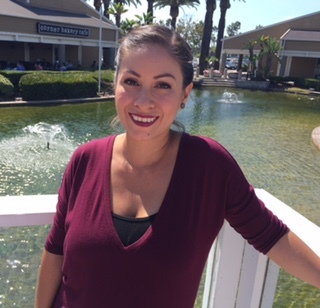
Crystal is a gentle parenting mama who loves reading, cooking, and exploring new trails with her husband and son. She is from Los Angeles but currently lives in Portland, OR where she is eating all the vegan food.
Paper Pinecone is the #1 most trusted childcare directory giving parents access to the best preschools and best daycares near you. Parents always search free and childcare providers always list free. Send inquiries about the best daycares and preschools to [email protected].
This post may contain affiliate links.

